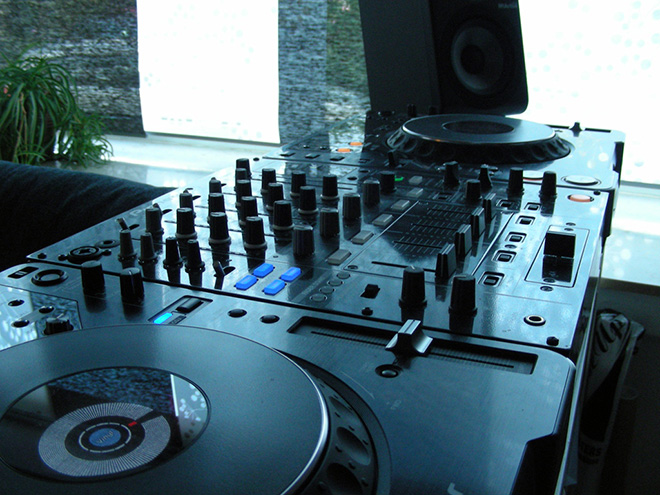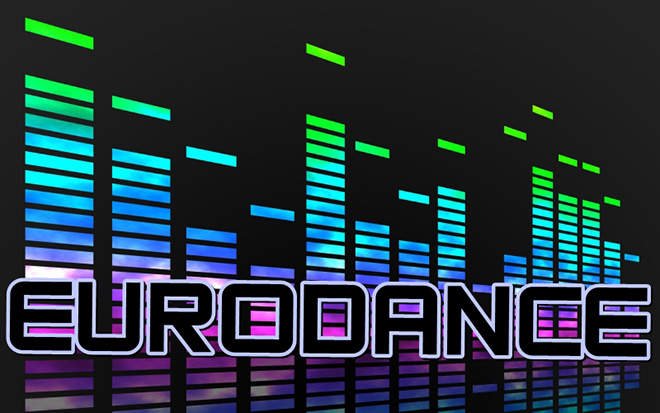The most important mainstream dance music album is likely one you’re not listening to – Basshunter’s Calling Time.
Yes, Basshunter has never been taken seriously in the dance music sphere. He’s a Eurodance artist that survived and produced hits far past the prime of “Dota” and “Boten Anna” (and their English-language versions “All I Ever Wanted” and “Now You’re Gone”). He’s racked up Youtube views not because of his music but for featuring a porn star in his videos. And the less mentioning of the “leaked” orgy photos and the Eurodance version of “Jingle Bells,” the better.
Yet Calling Time marks a more mature turn for the singer and Eurodance producer born Jonas Altberg. Novelty tracks aside, the tinny, cheap sounds of his earlier albums get replaced with thicker, more complex textures and far more polished vocals.
But what makes Calling Time significant, beyond this more serious turn for Altberg, is the fluidity it displays between run-of-the-mill progressive house and Eurodance. Eurodance has turned into dance music’s dirty word – something symbolizing a time when producers were nameless, singers or miming models represented a group, and, really, nearly every track pumped out sounded the same.
Modern electronic dance music claims to have learned from the days of La Bouche and 2 Unlimited, with Eurodance fading on a mainstream level beyond the occasional song from Basshunter or Cascada. However, Calling Time marks an “emperor’s new clothes” moment, in which Eurodance beats and textures blend with those not out of place in a Swedish House Mafia or Calvin Harris track; in fact, even Erick Morillo even stops by on “Saturday.” It’s as if Altberg’s winking at his audience, telling them, “Didn’t you notice this the entire time?”
The problem is, the frivolous of Eurodance – particularly when juxtaposed with contemporary electronic dance music movements, like fading synthpop, bass music in the U.K., and electronica on both sides of the Atlantic – didn’t warrant an artist landing on the cover of Rolling Stone in the ‘90s. An album review in the inner pages, yes, but music magazines rightly regarded everything from Black Box to ATC as meaningless piffle. These days, reporters for news value wonder what Sebastian Ingrosso, Axwell, and Steve Angello all plan to do next, and Nervo ends up on the cover of DJ Times.
As much as those making and following mainstream electronic dance music don’t want to admit, modern progressive house is simply Eurodance, part II.
1. The Melting Pot Format
A trend over the past three years or so is the gravitation toward a single dance music sound – a strong dollop of house, hints of techno and electro, and more than enough of trance, with perhaps a bit of dubstep thrown in. And while the production gets pulled in this direction, the vocals end up pushed higher in the mix.
This format characterized Eurodance from the start. Although there’s a distinctive Eurodance synth sound these days, the subgenre from its earliest hits can be spliced into a combination of house beats and big synths, trance-style arpeggios, and techno-influenced secondary rhythmic elements. A fair amount also ape on synthpop’s style, to the point that the Pet Shop Boys once covered Culture Beat’s “Mr. Vain” in concert. Save for a handful of songs, this foundation supported brassy female vocals and a male rapper delivering a verse or two.
Two developments have partially evolved progressive house from this template. One, more musical elements are added into a far more texturally-dense composition. Two, a fair percentage of mainstream artists release tracks without vocals that focus more on rhythmic elements, rather than synth and arpeggiated melodies; take, for instance, most of Porter Robinson’s or Nicky Romero’s output.

2. Crank Them Out
These days, pressure from social media forces an artist to keep on putting out new music, even if it doesn’t sound particularly original. More music correlates with increased interest from a fickle fanbase looking for the next hot thing.
While Eurodance producers faded into the background of anonymity behind the “face” of the group, the songs came out at an equally-fast pace. In certain cases, producers had a hand in different projects, while singers, possibly uncredited like a pre-pop star fame Alexia working with producer Roberto Zanetti on Fourteen 14, MC Lyte, and Double You, got swapped between tracks. What resulted was a constant stream of hits following similar formats, with fans never having particular allegiance to one act or another.
On the other hand, while a typical Eurodance act may have put out a hit or two, and maybe a hastily-assembled album, the current dance music climate shows a single producer can continue to get on the Beatport chart, assuming he doesn’t have a huge gap in between songs.
3. Vocals Have More Importance
The big problem with Eurodance is, no matter if an interesting synth line or beat surfaces amongst the drivel out there, the primary focus is the vocalist, regardless of how much studio time he or she actually spent.
Progressive house has gravitated to this format over the past four years. Need proof? Try listening to a David Guetta or Benny Benassi album released before 2007, and the sonic different becomes evident almost immediately. With the exception of actual house singers replacing today’s pop stars, the production ends up higher in the mix and – as cheesy as they sometimes can be – the synths and arpeggiated lines hold equal importance to the vocals.
Compared to the sameness of many Eurodance tracks in the ‘90s, this progression isn’t necessarily a bad thing. While the “David Guetta Effect” – notice most producers ended up pushing their own sounds lower into the mix once Guetta shot to fame in the U.S. in 2009 – means the producer plays second fiddle to a pop star, dance music evolution means greater variety outside of the singer-rapper pairing.
4. Performance
In many regards, performance is the most significant factor dividing Eurodance from progressive house: The former had the “face” miming in performances, while the latter involves getting behind a controller and laptop to mix up a few tracks for an hour or two.
Or is it? Although there are extreme examples on each end, both symbolize that when it comes to dance music, no one really knows how to perform it. Eurodance kept the producer out of the live music picture entirely; fans, on the other hand, had to see a couple of singers mime it for an hour. Or, in the case of an act like Black Box, the “singer” ended up being a model who hadn’t even sang on the song lip-synching on stage.
However, progressive house’s latest producers – or anyone who shot to fame after 2010 – have been accused of faking it on stage with prerecorded setlists and simply pressing the space bar, all while letting the visuals and familiar tracks get the crowd going.
As one positive, even though neither have worked out an ideal way to perform dance music, the half-baked festival DJing style at least acknowledges the producer’s role in creating the track.
5. Success in the U.S.
With a few changes (see the “David Guetta Effect” above), progressive house turned into the dance music force to finally conquer the mainstream musical landscape in the U.S. And with a couple of exceptions (see Skrillex, Disclosure, and Daft Punk), it has turned into the dominant form the typical American listener views electronic music.
The ‘90s saw a similar effect. With the exception of a couple of electronica acts and synthpop groups on the way out, Eurodance’s faceless presence represented electronic music on the charts, with acts like The Real McCoy, La Bouche, Corona, Rednex, and ATC, among many more, scoring single hits.
History shows that Eurodance eventually blended into the rising trance movement of the late ‘90s and early ‘00s, and mostly, the subgenre is rarely mentioned these days, except as a cautionary warning about how dance music used to be. But like Fedde Le Grand telling the Las Vegas Review-Journal that Europe went through a similar phase in the 1990s, the mainstream music scene in the U.S. will likely repeat itself, get this stage of progressive house out of its system, and move onto something else.




